Written by Rebecca Turley

An economic transformation is underway in Oklahoma, and it has technology and innovation squarely in its crosshairs. It’s being referred to as Oklahoma’s “Innovation Rush,” and it’s marked by major federal funding and the kind of ingenuity, enterprise, and determination that allowed the state to prosper as a leader in oil and agriculture for generations. The Oklahoma pioneering spirit is alive and well and ready to usher in a new era where advanced technologies like artificial intelligence, robotics, and autonomous technology are destined to position the state as a leader in innovation in the years to come.
“This is a new era in Oklahoma, one that embraces innovation, science and technology, and leverages on our state’s unique assets to make Oklahoma a Top Ten state for innovation.” ~ Oklahoma Center for the Advancement of Science & Technology (OCAST)
It’s no secret that Oklahoma has been behind the technology curve throughout the better part of the past decade, usually falling somewhere in the bottom 10 percent of states on the Milken Institute’s State Technology and Science Index. But major changes are afoot in the Sooner State, led by the convergence of forces in state leadership, industry, and academia and supported by historic federal funding for the big metro areas of Tulsa and Oklahoma.
Both of these Oklahoma cities are recipients of funding through the American Rescue Plan Act’s Build Back Better Regional Challenge, securing competitive grants ($35 million for Oklahoma City and $38 million for Tulsa) to increase their technology efforts and position Oklahoma as a hotbed for advanced technology.
In Oklahoma City, the funds will be used to expand efforts of the 40-member Oklahoma Biotech Innovation Cluster (OBIC) Initiative. And in Tulsa, they’ll be used to advance areas like advanced mobility, automation, cybersecurity, artificial intelligence, and unmanned aerial systems for the 50-member consortium of the Tulsa Hub for Equitable & Trustworthy Autonomy (THETA). Oklahoma City leaders are looking to cultivate the city’s role as a national hub for drug development, testing and manufacturing, while Tulsa leaders and innovators hope to capture a significant share of the autonomous systems market, which would result in about 200,000 new jobs over the next decade.
It’s an exciting time to become part of Oklahoma’s technology wave and position yourself as an expert in artificial intelligence. But first you’ll need a foundation in this interdisciplinary field that only a formal degree or certificate program can provide. Fortunately, a growing number of colleges and universities across the country are now offering bachelor’s and master’s degrees in artificial intelligence to prepare scientists, data analysts, and engineers with the skills and knowledge needed to become trailblazers and leaders in this interdisciplinary field.
Autonomous Trucking Makes Its Debut in Oklahoma City
 Autonomous trucking is taking a victory lap between Oklahoma City and Houston.
Autonomous trucking is taking a victory lap between Oklahoma City and Houston.
A.P. Moller – Maersk, an integrated logistics company, which operates in more than 130 countries, and Kodiak Robotics, which delivers freight using its autonomous technology and is also involved in autonomous technologies for the U.S. Department of Defense, recently joined forces to autonomously haul consumer goods between Oklahoma City and Houston.
This first-ever commercial autonomous trucking lane in the region will expand upon Maersk and Kodiak’s partnership, which has been making autonomous freight deliveries since 2022 as part of Maersk’s Global Innovation Center Program. It’s all part of an overall effort to digitize the supply chain, with self-driving trucks providing customers with reliable and sustainable logistics solutions. Autonomous trucking has the potential to mitigate accidents and relieve the trucking industry’s driver shortage which, according to the American Trucking Association, could reach 160,000 over the next decade.
Though the deliveries are autonomous, a safety driver is behind the wheel. Kodiak and Maersk are making four, round-trip excursions every week. Each vehicle features 18 different sensors, including cameras, radar, and lidar, which offer a 360-degree view around the truck. The system constantly assesses more than 1,000 processes and components and makes system upgrades, as necessary. The trucks learn alongside the system, with system upgrades shared simultaneously with the entire fleet.
AI Jobs in Oklahoma
According to CompTIA’s 2023 State of the Tech Workforce, Oklahoma is home to some 58,000 tech jobs. The state’s 4,700 tech businesses delivered an economic impact of $6.3 billion as of 2022.
Between 2021 and 2022, the state saw an increase of 1,060 tech jobs. Between 2022 and 2023, CompTIA projects that tech jobs in the Sooner State will increase again by 2.2 percent, reflecting an increase of 1,268 jobs.
Artificial Intelligence Jobs in Oklahoma City and Tulsa
Drug development, autonomous systems, advanced mobility, robotics – Oklahoma’s burgeoning tech ecosystem is being powered by artificial intelligence and driven by AI professionals like data scientists, computer vision engineers, machine learning engineers, software architects, and research analysts.
- ML developers at MindPal in Oklahoma City analyze and process data to create machine learning models. These professionals implement and optimize ML algorithms and test and evaluate ML models.
- AI marketing technology managers at Highmark in Oklahoma City take the lead on the integration of AI technologies, guiding teams to become proficient at using the latest AI tools for a variety of applications. They prototype, test, and implement new uses for AI tools.
- AI architects at Diverse Linx in Tulsa design, develop, and train AI models, leverage deep learning frameworks, and create client architectures and algorithms to solve complex problems in natural language processing, machine vision, and other AI subfields.
- Senior technical consultants (conversational AI delivery) for Genesys Cloud Services in Oklahoma City work with customers, sales teams, and internal company teams to lead projects in presales, discovery, and development and find solutions for IVR and bot architectures.
- AI/ML specialists (image science engineers) at Level 3 Communications in Tulsa work within Aeromet L3Harris, a division of the company’s Mission Systems Segment, developers and operators of special mission ISR systems for the DoD community. These professionals work to enhance and develop image processing techniques for the company’s advanced EO/IR mission systems.
- AI and computer space engineers with the Thales Group in Tulsa develop highly reliable accurate algorithms and computing platforms to produce more affordable and reliable space systems.
- Machine learning engineers at Sequoyah Technologies in Tulsa, who are part of the MLOps team, operate and monitor ML models using high ends tools and technologies.
AI Companies in Tulsa and Oklahoma City
From established companies to emerging startups to university R&D, it’s all hands on deck in Oklahoma to create a tech ecosystem that’s built to support emerging technologies like artificial intelligence.
There are mainstays like Human Mode Robotics in Oklahoma City, which has been working to advance humanoid and collaborative robotic systems that can operate in uncertain and unpredictable environments since 2017. This company is home to prototyping facilities where engineers create robot systems for the industrial, healthcare, defense, first response, and research industries.
There are also plenty of exciting startups like Tulsa-based Arbit, an AI-powered sneaker resale pricing platform. The company’s pricing algorithm application uses data analytics and machine learning to determine the true fair market value of sneakers, thereby creating a fair and transparent marketplace.
And some companies are making the move to Oklahoma to take advantage of the state’s growing tech ecosystem. For example, in September 2023, Laundris, a business-to-business, AI-powered industrial automation software platform, announced its relocation from Austin, Texas, to Tulsa, settling in at 36 Degrees North, a hub for entrepreneurs and startups.
At the same time, university research in artificial intelligence is busy making waves. In April 2023, the University of Tulsa received a $3.75 million award from the U.S. Army Engineer Research and Development Center to study robotics, AI, and virtual reality. Students and faculty will study how advances in machine intelligence, automation, and computing can create safer and more secure work and living spaces. The research teams will use both AI and VR technology to measure environmental properties of spaces and build smart spaces and test sites where they can use robotic dogs to perform mundane or dangerous tasks that humans don’t want do.
And at the University of Oklahoma, researchers are studying artificial intelligence through two centers:
- The AI4Networks Research Center is focused on data- and machine learning-driven analysis for designing and optimizing intelligence in complex systems like mobile networks, smart grids, and UAV-based autonomous systems and self-organizing networks. Their work is also focused on human brain-inspired and neuromorphic next generation AI and the use of AI and big data in healthcare.
- The Data Institute for Societal Challenges (DISC) is a team of researchers who search for solutions to regional and global challenges using foundational data science and data-enabled research. Their work is focused on creating advances in data science, AI, ML, and real-world applications.
AI Salary in Oklahoma City
According to the Bureau of Labor Statistics (BLS), AI engineers and scientists in Oklahoma, who are categorized by the BLS as computer and information research scientists, earned a median salary of $88,590 as of May 2022. Those new to the profession earned about $70,620, while those at the top of the pay scale earned about $122,680.
AI professionals in the Oklahoma City metro area earned a median salary of $88,500 as of May 2022, which closely reflected the state average. The top earners in OKC earned about $121,700 during this time, which is slightly less than the state average.
Artificial Intelligence and Machine Learning Master’s Degree and Certificate Courses in Oklahoma and Online
An increasing number of colleges and universities, both in Oklahoma and throughout the country, have begun offering both undergraduate and graduate degrees in artificial intelligence. Many of these programs are offered in convenient and flexible online formats that allow students to earn their AI degree, regardless of their geographic location or busy work schedule.
AI bachelor’s degrees provide a foundation for emerging computer scientists and engineers. These programs feature a math and science core, complete with courses like probability, linear algebra, and calculus, alongside theory and practical applications in AI.
Whereas AI bachelor’s degrees provide a comprehensive view of the field, AI master’s degrees and graduate certificate programs tend to offer more focused courses of study. Most programs are located in computer science or engineering departments, allowing practicing scientists and engineers to focus on specific areas of this interdisciplinary field.
For example, Oklahoma Christian University’s Graduate School of Engineering and Computer Science offers an MS in Computer Science with an AI emphasis. This program features courses in machine learning and intelligent systems, as well as two AI projects that allow students to put their skills to use to solve problems associated with machine learning, AI, and software development processes.
AI Computer Science Degree and Certificate Options in Edmond
AI computer science degrees and graduate certificate programs prepare students through an extensive core curriculum that builds a foundation for AI theory and practice.
Oklahoma Christian University
Graduate School of Engineering & Computer Science
Edmond, OK
Website

MS in Computer Science-AI emphasis (on-campus)
Total Estimated Program Cost: $18,150
Only private AI master’s degree in Oklahoma.
2022 US Bureau of Labor Statistics salary figures for computer information and research scientists. Job growth projections from the US Department of Labor-sponsored resource, CareerOneStop. Figures are based on state data, not school-specific information. Conditions in your area may vary. Data accessed February 2024.

